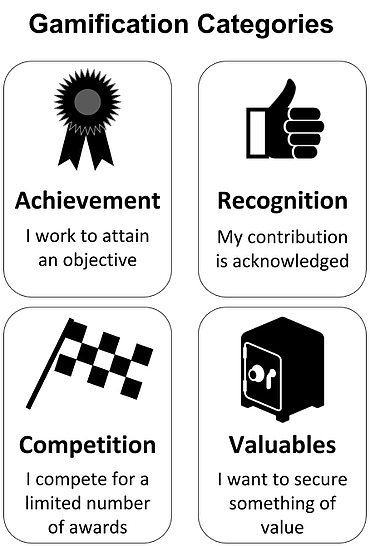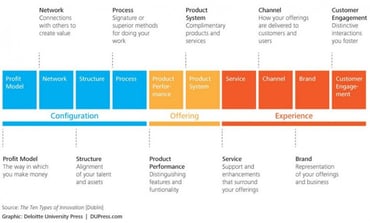“Design thinking draws on logic, imagination, intuition and systemic reasoning to explore the possibilities of what could be, and to create desired outcomes that benefit the end user (the customer).
A design mind-set is not problem-focused, it’s solution-focused, and action-oriented. It involves both analysis and imagination. Design thinking is linked to an improved future and seeks to build ideas up—unlike critical thinking, which breaks them down.
— Linda Naiman, Founder of Creativity at Work
What is design thinking?
Design thinking, according to Naiman, informs human-centered innovation.
"Human-centered innovation begins with developing an understanding of customers’ or users’ unmet or unarticulated needs," Naiman wrote in an article for the International Association of Business Communicators.
Naiman points out that large corporations are using design thinking to evolve the way they innovate.
"The focus of innovation has shifted from being engineering-driven to design-driven, from product-centric to customer-centric, and marketing-focused to user-experience-focused," Naiman writes.
For the innovator, the design thinking approach minimizes the uncertainty and risk by using collective intelligence through a series of lenses to grow their understanding of customer needs.
The key is to think like a designer in the way you lead, explore, create, and innovate.
Why design thinking is important?
If you want to change something from the present situation into a preferred one, design thinking helps you achieve it. It takes you through a process. It helps you reduce the risks by engaging with internal and external stakeholders seeking out a new solution that solves a need, problem or challenge.
This comes through a series of prototypes to learn from, to test and then continually refine concepts to get them to the finished value-adding point, taking away the issues.
One of the best illustrations of the design thinking process is shown here:
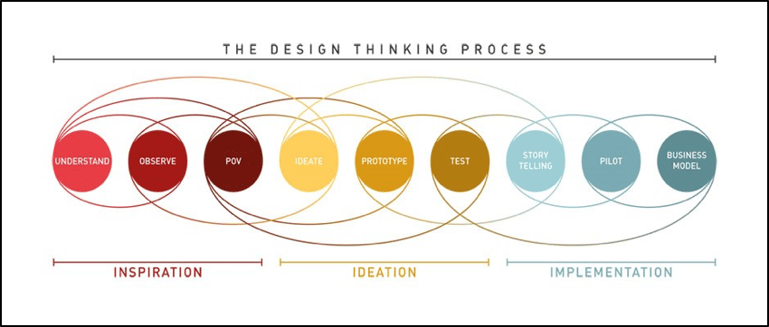
Design thinking helps to gain greater clarity to find viable, feasible, and desirable ideas. In its simplest form, design thinking can be thought of as building a series of conversions that draw out the needs that eventually become the solution.
Design thinking can be highly supportive for continuously finding new meanings for products and new usages or services. It can help answer why a customer will buy (or why they will change their behavior), clarify and make sense of things, and be the catalyst for bringing insights and concepts together. So, Design Thinking is an approach to Creative Problem Solving inspired by how designers work.
To quote Tim Brown, IDEO:
“Design thinking is a system that uses the designer's sensibility and methods to match people's needs with what is technologically feasible and what a viable business can convert into consumer value and market opportunity.”
How does design thinking process look like?
Managing New Product Development (NPD) can be a daunting challenge, so it is critical to focus on what is important.
Design thinking becomes a highly useful and effective collaborative strategy to identify and solve problems. As it is a non-linear, iterative approach that focuses on user needs, articulating frameworks, and formulating a strategy, it's constantly addressing the direction, design, and development and encourages a “fast acting-learning” cycle.
To quote Soren Petersen:
“Better design metrics and decision-making in the product selection process could significantly reduce new product development failure rates. In addition, including design considerations before marketing investments are made would qualify as a game changer.”
Recognizing that the direction, design, and development needs are constantly looping back to validate against the user needs is central to design thinking. The earlier you involve design thinkers, the more you can provide valuable support in the NPD process.
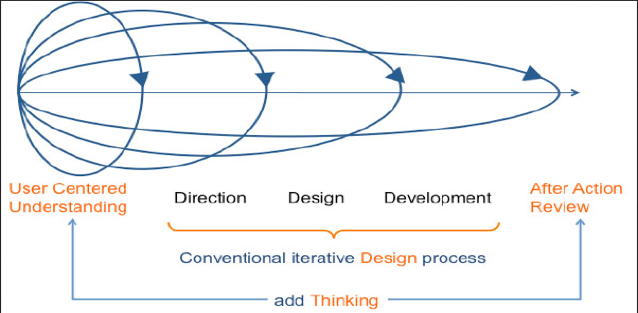
Establishing an inspirational design brief early on can help guide the process. Having part of any brief include the design strategy can assist in facilitating innovation strategy, diagnosis, formulation, and implementation.
The challenge with design thinking
To date, design thinking’s primary use has been in developing incremental innovation or helping resolve specific problems or challenges.
There are often recognized needs established, but if the requirement has a more open brief then design thinking needs to shift from a tactical part to play into a more strategically designed one. The problem definition, placing it in the appropriate context sometimes becomes as complex to understand as the thinking that goes into achieving the potential solutions. There can be a lot of pushback if the problem has not been fully framed, as the solution might only have many unintended consequences.
In this recent report by the Royal Society for the Encouragement of Arts, Manufactures and Commerce (RSA) an action and research center called “From Design Thinking to System Change:”
“Great design doesn’t always generate impact. As we show in this report, innovations attempting to scale and create systemic change often hit barriers to change, sending them catapulting back to square one. We call this the ‘system immune response’. The particular barriers will differ dependent on context, but might be cultural, regulatory, personality driven or otherwise…
“Design thinking alone will not be enough. The core insight of this paper is that solving our most complex problems will require augmenting design thinking with a systems thinking approach as the basis for action.”
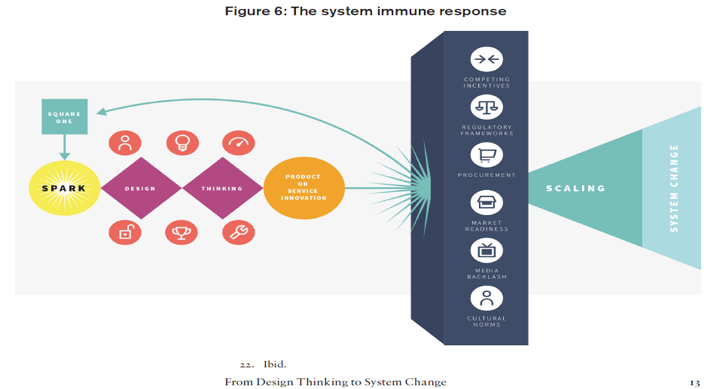
The critical point is that design thinking is human-centered
It stands in service of creating positive outcomes for people, then its value is through a series of activities to inspire the essential elements of creativity, to be able to take an abstract idea and create something with it. It helps you to actualize your concepts and results, to drive increased adoption, help design the behavioral change and ease in ongoing use. So, it becomes the tool to engage with people, find the purpose that ‘it’ is meaningful and as a result, it should generate positive cash flow. Value, meaning, and profit.
The five phases of design thinking, according to d.school, are as follows:
- Empathize – with your users
- Define – your users’ needs, their problem, and your insights
- Ideate – by challenging assumptions and creating ideas for innovative solutions
- Prototype – to start creating solutions
- Test – solutions
It is important to note that the five phases, stages, or modes are not always sequential.

Design thinking with services in mind
Design thinking is not just for products; it can help across services, and in designing new business models. As we combine product and service far more then design thinking is focusing even further on meeting the user’s and customer’s needs for that service. Service design needs to ‘feed’ into creating those great customer experiences.
Today many organizations, capitalizing on technology are looking to build a comprehensive customer journey map, covering all the touch-points that a customer has with the organization. Each of these becomes a potential engagement point, but so often organizations struggle as they lack a complete understanding.
Design thinking can help and become as valuable to be part of any process, organizational information, and technology (re-)design. One of its critical roles to play is to keep the organization clear it is not internal design needs; it is customer needs as central. Often customer journey understandings become component-by-component built by the specific team engaged in that touch-point (customer service, spare or replacement part, billing) but the total delivery of any service-oriented solution needs a holistic approach, and design thinking can greatly help in this.
Service design tends to have a higher planning and organizing level. The focus is on understanding infrastructure, communications, and material components increases. The service design has a higher “quality, time, and interaction” emphasis for the response outcomes.
A constant questioning with any design thinking process revolves around “is it useful, usable, desirable, efficient, and effective?” The more you involve the customer, the more you design the solutions to match these requirements.
How design thinking can transform a service industry provider and how it engages and designs
Software provider SAP has become deeply involved in design thinking. It saw design thinking as a way to tackle complex challenges and make its software more intuitive and easier to use through engaging internally and externally gathered around design thinking principles. SAP’s co-founder Hasso Plattner founded the SAP Design Services Team as an organizational transformation incubator and made a personal donation of $35 million to found the Hasso Plattner Institute of Design at Stanford, now known worldwide as simply “the d.school.”
The company made a deep, ongoing commitment to reinforce design thinking and trained thousands of design thinking coaches, offering SAP design services to enable customers to equally engage in experience design, and went on to create co-creation centers in different locations around the world.
SAP’s global design function, with a Chief Design Officer, has won numerous awards including seven Red Dot awards that "judges" design in product design, general design concepts, and communication designs from agency work.
SAP offers design thinking through numerous educational platforms, such as "massive open online courses" (MOOCs), to train software engineers and co-innovate with its customers at different centers. The company makes available a raft of useful design tools and has a dedicated website, www.build.me, where you can design enterprise apps. SAP also has a dedicated design thinking website https://designthinkingwithsap.com/en/
Three examples of top design organizations
The Design Management Institute has a design value index based on 16 publicly-traded stocks considered as “design-centric.” The criteria reflect best design management practice and these companies show a 211 percent return over the S&P 500. These exemplars are building highly-functional design organizations in less time than the past.
In a recent report from the DMI, they offer this change in design where there is a growing momentum:
“When the leadership gets behind design thinking, an enterprise-wide design function forms then the positive results can be built in less and less time. Also design is becoming a more strategic as well as tactical capability. Today we are seeing service, non-profit, management consultants and governments trying to build design capabilities. Design thinking has moved from a ‘fad’ and by increasingly putting the user at the center of the problem or challenge it increasing is providing solutions that are outside in rather than inside out in providing better answers.”
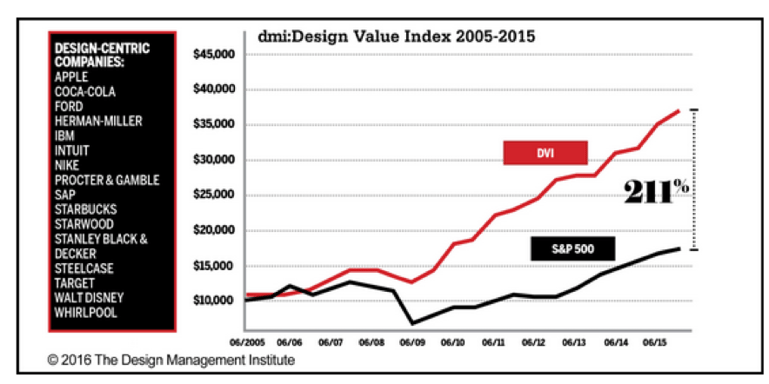
In the DM+ Vol 27. Issue 4 Design Value Index Exemplars Outperform the S&P 500 Index by Jeneanne Rae, Founder and CEO of Motiv Strategies, explores Honeywell, 3M, Pepsico, Capital One, and GE as design exemplars. These organizations have been able to dovetail on the DMI for best practice criteria. Presently, those qualifying for best-in-class design management practice meet a set of six criteria for their inclusion in the Design Value Index:
- Design operates at scale across the enterprise.
- Design holds a prominent place on the company organizational chart, and either sits on the leadership team or directly reports to a leadership team member.
- Experienced executives manage the design function.
- Design sees a growing level of investment to support its growing influence.
- Design enjoys senior leadership support from the top tier of the organization.
- The company has been publicly traded on a U.S. exchange for the last ten years and thereby adheres to GAAP accounting rules.
How to integrate design thinking into your innovation process
What is critically important, is that design thinking becomes recognized as a potential organization capability building methodology. Of course, design thinkers take years to get to a real experience level, most are probably passing through numerous design school courses. But, within each organization, the general understanding of basic design thinking has its place.
In the article How to Integrate Design Thinking With Creative Problem Solving for Innovation by Linda Naiman (again), she offers a really good visual along an eight-step process:
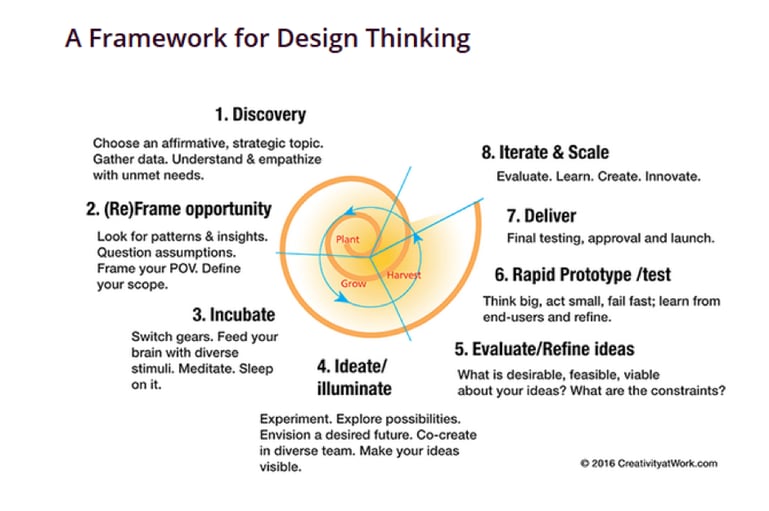 1. Discovery
1. Discovery
Choose a strategic topic to focus on and learn about. Design thinking starts with an end goal, a desired future, and approaches to how you can make it happen. The topic should be one you find compelling and motivating. Research your topic for insights. What do you need to understand? What are the opportunities embedded in problems? Ask “why” questions to dig deeper.
Leverage stories to discover insights. What stories are your customers telling about their experiences? What are the hopes, fears, and goals that motivate them? What insights can you draw from their problems and aspirations?
2. Frame and reframe
Framing the right problem is the only way to create the right solution. Make sense of research by seeing patterns, themes, and larger relationships between the pieces of information. Uncover customer insights to reframe problem areas into opportunities.
3. Incubate
Creativity comes from a blend of individual and group ideation. Give people time to reflect on ideas and incubate on their own before running a group ideation session.
4. Ideate
Now that you have some deep insights about your customers or users, generate ideas for offerings that will deliver value to your customers. Build on ideas by asking “What else?” The goal is to push beyond the obvious and generate a set of really good options for consideration.
5. Decide
Display your ideas on a wall and look for ideas that have "wow" power. This will save you from draining everyone’s energy by debating every single idea. Vote for the best options based on criteria such as desirability, technical feasibility, and business viability. The team can then choose one to three ideas to prototype and test.
6. Prototype
Combine, expand, and refine ideas in the form of rough models or sketches. Invite users to test out and respond to your prototype. How do they feel about your ideas? What feedback do they have? Their responses will inform whether you move forward or kill your idea before investing additional resources.
7. Deliver
The prototypes you have tested, built, and launched will have a better chance of succeeding in the marketplace.
8. Iterate
Design is not linear. It is an iterative process. Use feedback to improve on your ideas and keep iterating until there is nothing more to add or subtract.
How to build your design thinking capabilities
There are countless sites that offer ways to build your design thinking capabilities. The one I would suggest is offered by the d.school from Stanford University. It helps you begin to educate and train your organization on design thinking and instructs you on how to run an effective design thinking workshop. Stanford's d.school offers resources with great insights. Their crash course can certainly help you become far more aware of the power of design thinking.
In this crash course, “Be a Design Thinking facilitator!”, you can join a community of learners, doers, and teachers. "Journey through a Design Thinking experience, apply it in the real world, and go forth and teach others the methodology" is its promise. Help your team move from learning design thinking to doing design thinking by visiting “Chart your own course.” They give you playbooks, videos, and lots of ideas for kickstarting design thinking in your organization.
This makes for an ideal introduction but I would strongly recommend having a design thinking facilitator, well-schooled, alongside you would make all the difference.
I have to admit I am not a “crash course” fan unless it is for that essential “quicker” orientation to a subject. You can’t take up design and run with it as a bona fide design thinker; it needs a more in-depth understanding. Boot camps are equally great fun to get your designer hands dirty, but experience comes from not just making your own mistakes, experimenting, and getting increasingly comfortable with constant practice, but also from having a good guide to help you along the way.
It can get hard to explain design thinking to your manager or the board; often they just don’t get it. By having someone experienced alongside you, then you can gain real attention to the value and power of design thinking. But it has a journey that many find tough to navigate. Experiencing good design thinking facilitation firsthand is inspirational. It allows you to see the possibilities of designing and thinking by simply doing and getting involved.
In an article published by Quartz, Phil Gilbert, general manager of design for IBM software, explains that IBM’s design boot camps have an intrepid vision to train its entire workforce (more than 377,000 employees worldwide) to "think, work, and feel like designers." In the design boot camps, empathy (being able to understand another’s feelings), is a "mantra for groups trying to better connect with colleagues and clients." Employees learn about rapid prototyping, team dynamics, problem-solving, and how to tap into their customers’ and colleagues’ feelings and concerns to come up with better tech solutions. According to the article:
"The focus on design thinking has instilled a more collaborative, group meeting-based culture that may not be immediately embraced by all employees. 'It’s not just radical collaboration but radical transparency,' explains Gilbert. 'It’s a sharing of intentions, motivations, and information.'"
According to Gilbert, this would enable the $143 billion company to be more strategic and shift away from the engineering-driven '"features-first" ethos towards a more "user-first" mentality. “It allows us to solve real problems for real people instead of building a few features here and there,” said Gilbert.
Finally, we all need different skills in the future
As we are faced with consistent uncertainty, often termed the VUCA world (volatile, uncertain, complex, and ambiguous), the nature of the 21st century is exactly the right time for organizations to embrace design thinking.
We are all in need to develop the design thinking skills that will increasingly matter for our future. There are at least five skills that are also important in design thinking are in the "10 skills you need to thrive in the Fourth Industrial Evolution" of the World Economic Forum: complex problem solving, creativity, emotional intelligence, service orientation, and cognitive flexibility.
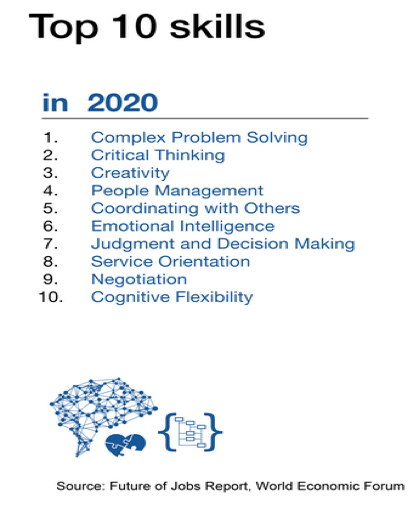
Further help on design thinking
If you've made it this far, you can certainly tell there is a LOT to know about design thinking. In fact, I wrote an e-book on design thinking. It gives a greater depth to design thinking as we know it today and provides a guide to what is around to refer to and review. It also touches on what has been controversial in the evolution of design thinking. It then points toward a future.
Design thinking holds a terrific promise to help in organizations. To not just be leading on product, service, customer experience designs but being very much caught up in the design of future business models and tackling those growing, complex problems that each of our organizations are suffering from.
What is ahead of you if you invest in design thinking?
So, design thinking is evolving. Design thinking needs a new lifting up into both tactical and strategic approaches. As we are all faced with the task of solving more complex problems that are strategic in need, it is for design thinking to step up and become more a key component on how to ‘do’ this. These as relating and pushing far more solutions to the customer needs, engaging the customer throughout the design, it is to help in solving organizational challenges or market challenges and those more ‘knotted complex problems’ that corporations and society are grappling with.
The ability to extract from design thinking methodologies can significantly help innovators in the future get closer to providing solutions closer to user needs. Today what is being increasingly demanded is to solve more complex problems in creative ways as essential, then design thinking will be increasingly needed to work in harmony with many other thinking skills to make its contribution. It can’t afford to stand alone, or it will not provide its contribution potential that it certainly can. It needs embedding as part of our collective thinking.
Related posts...









